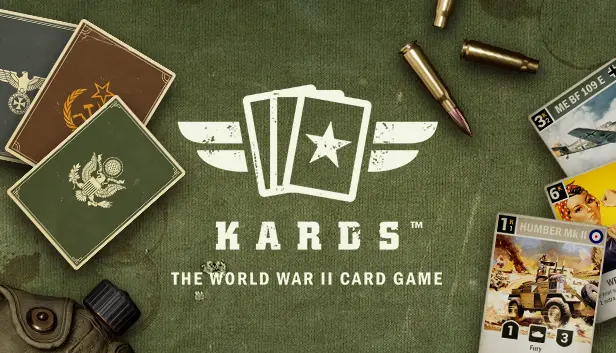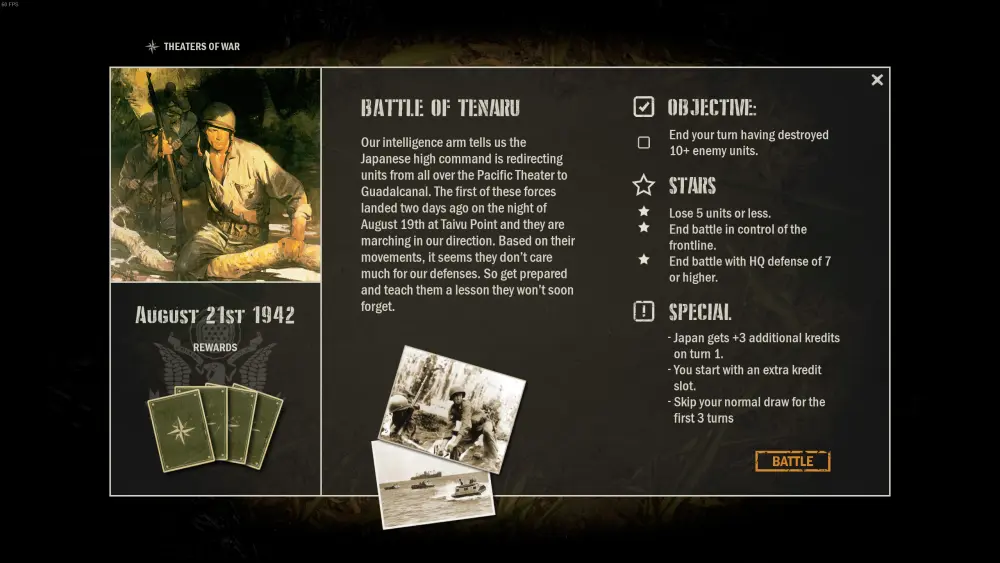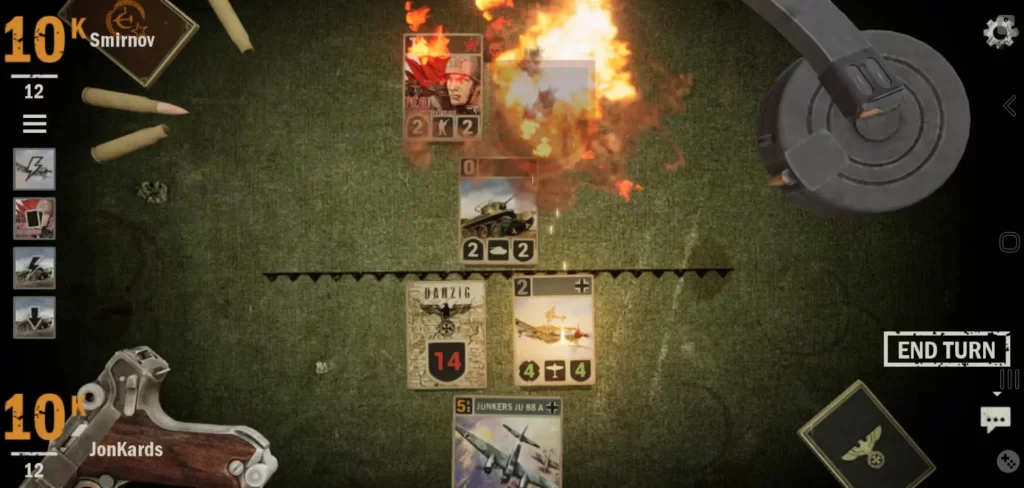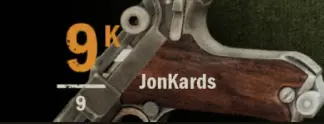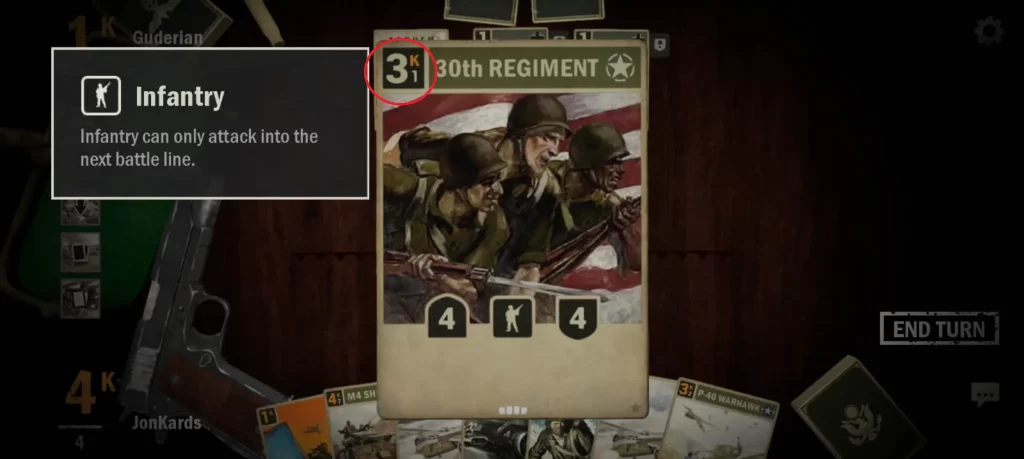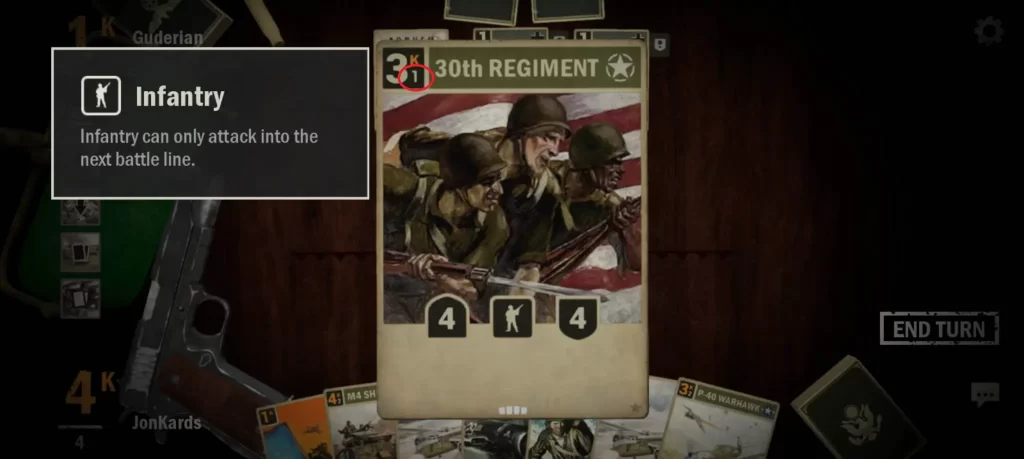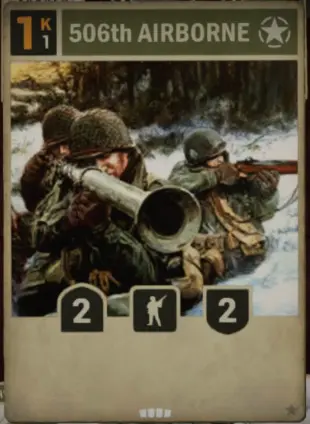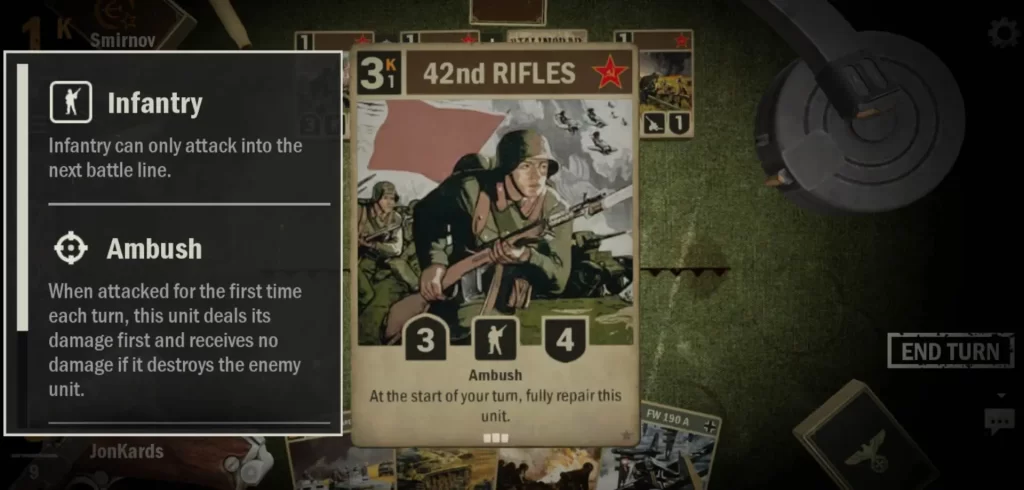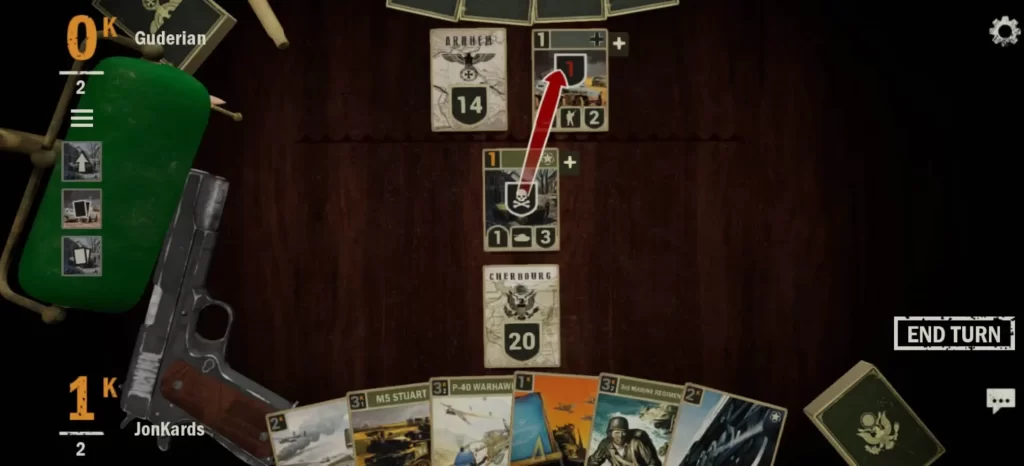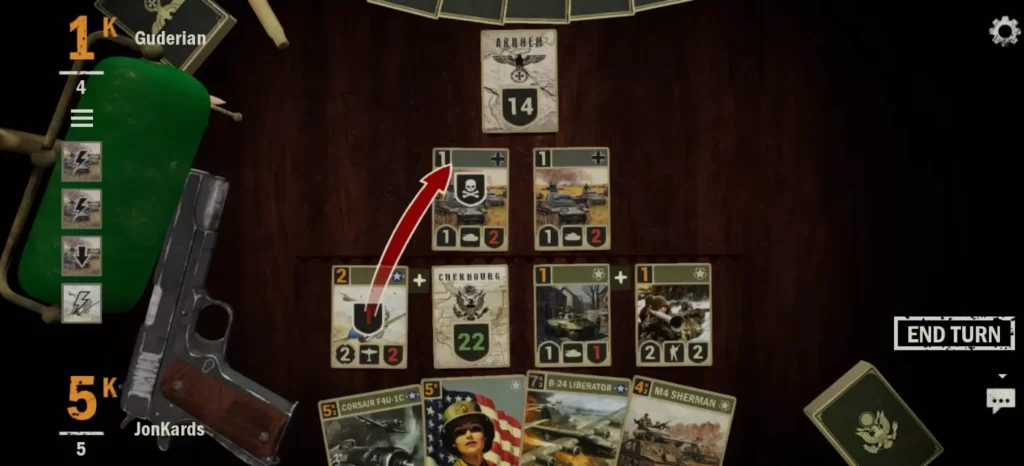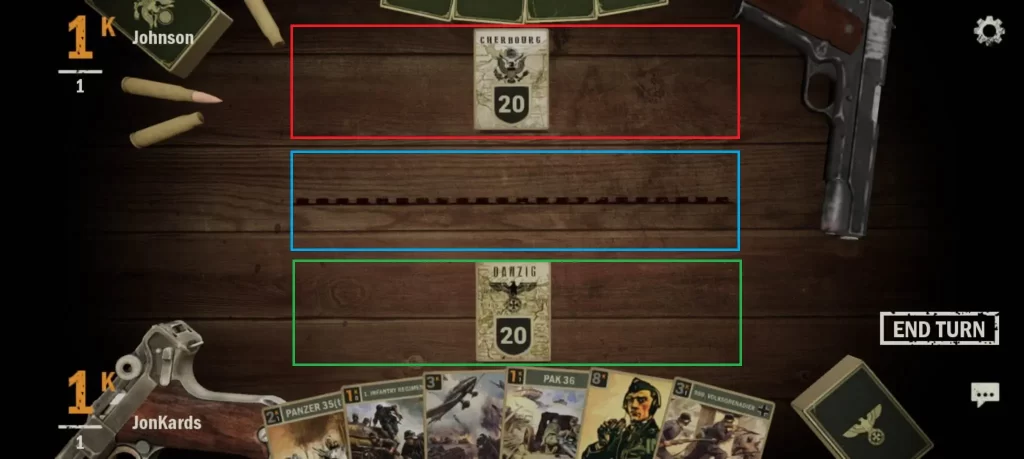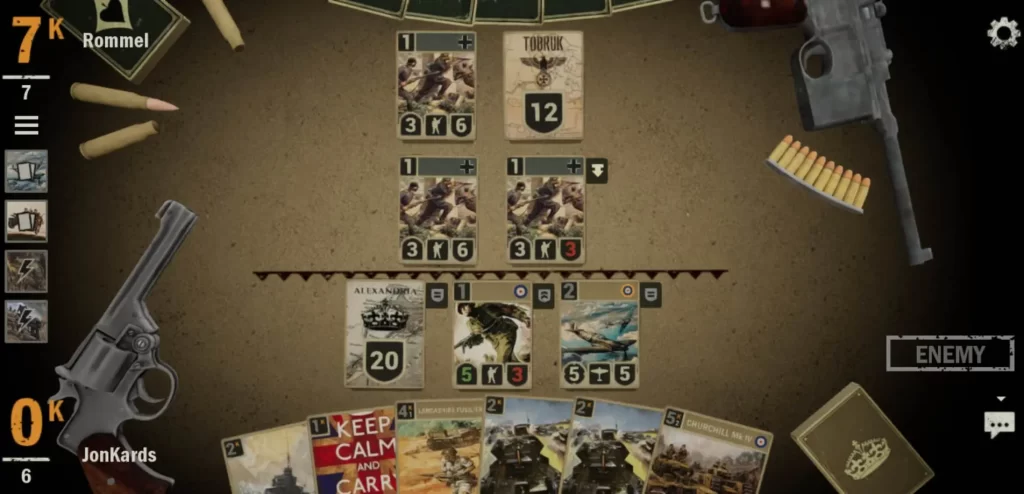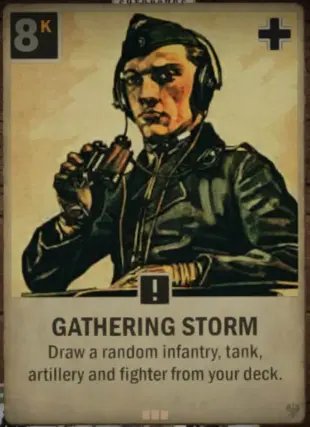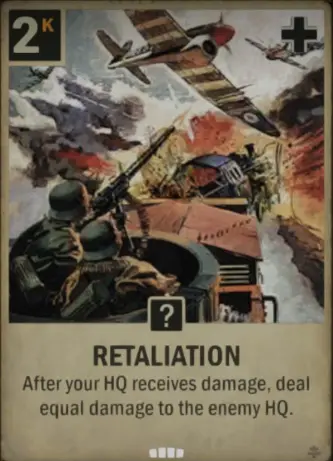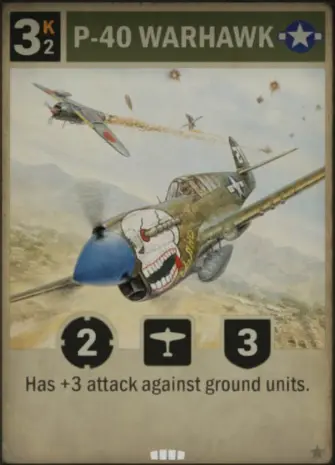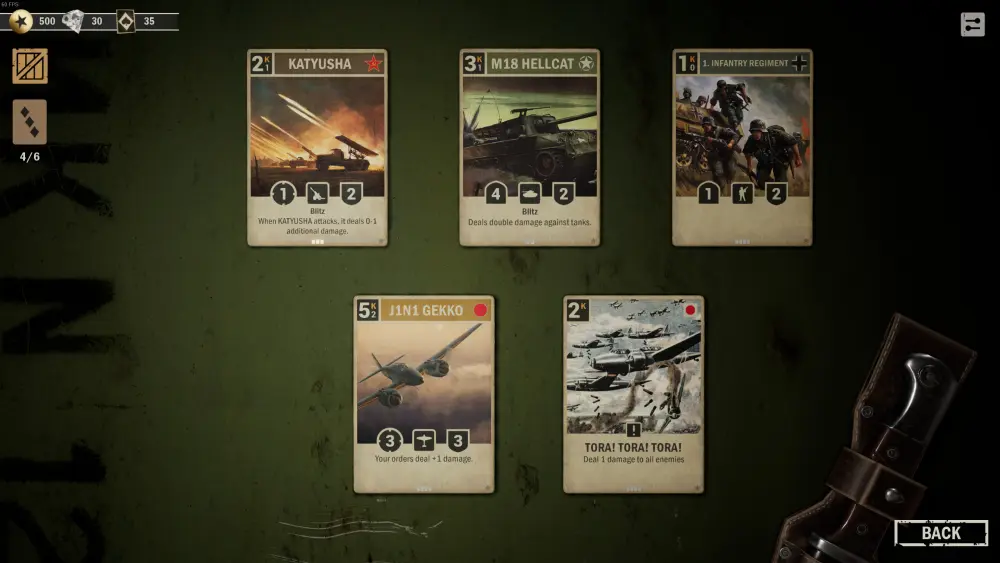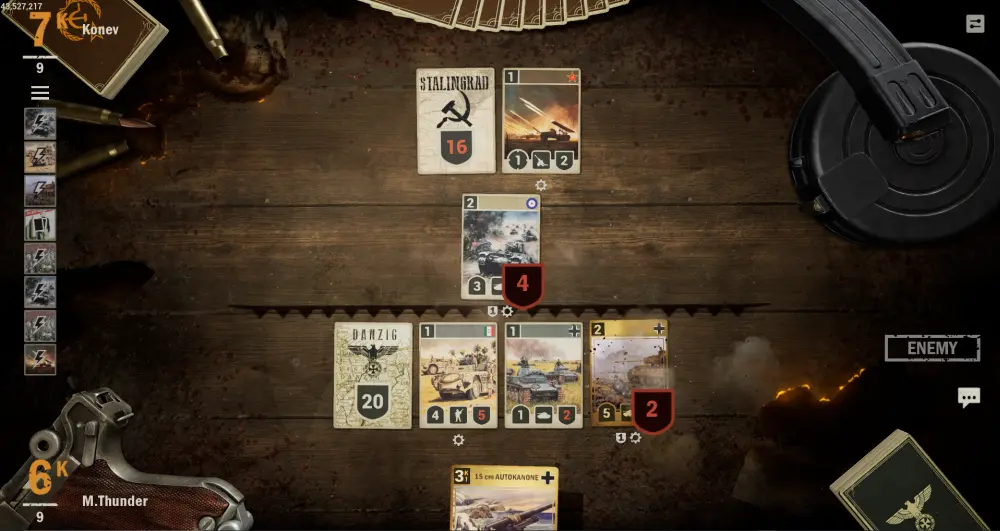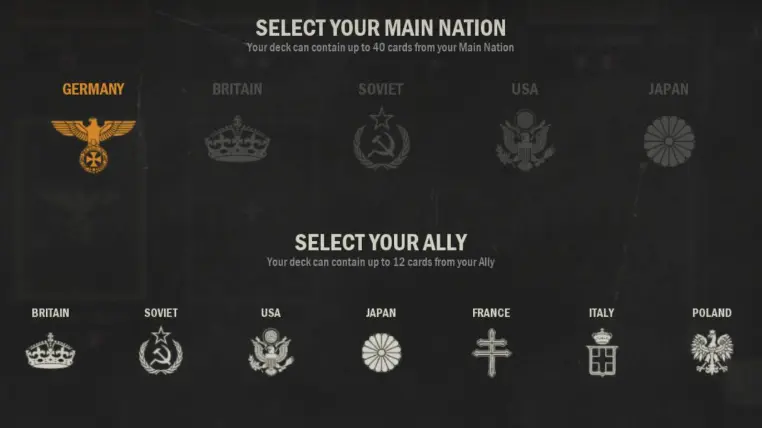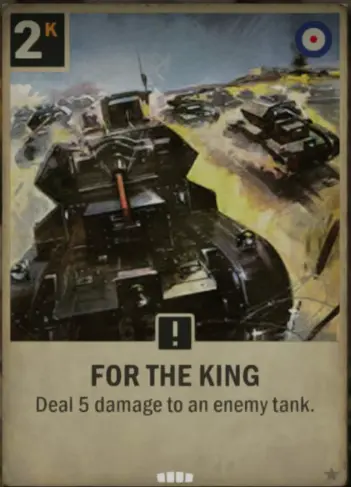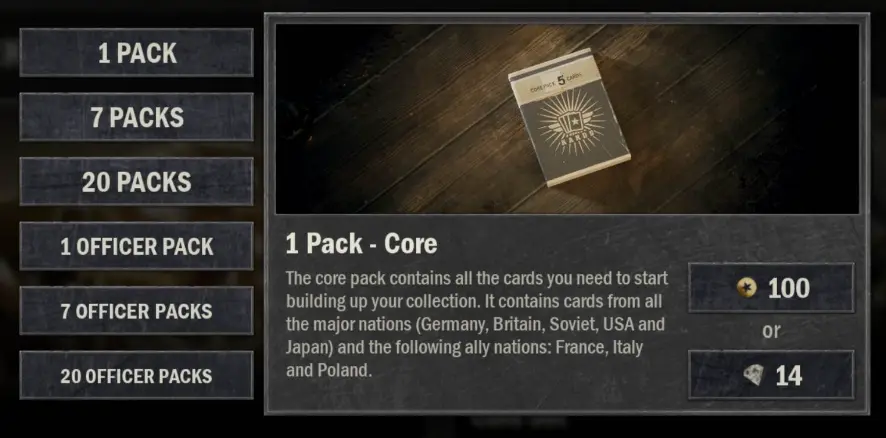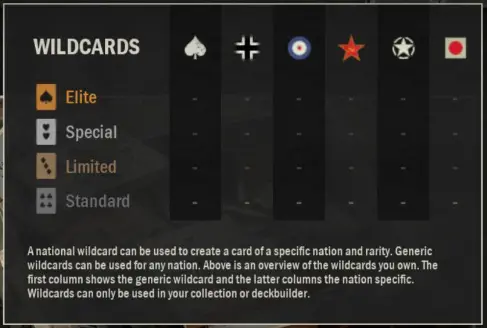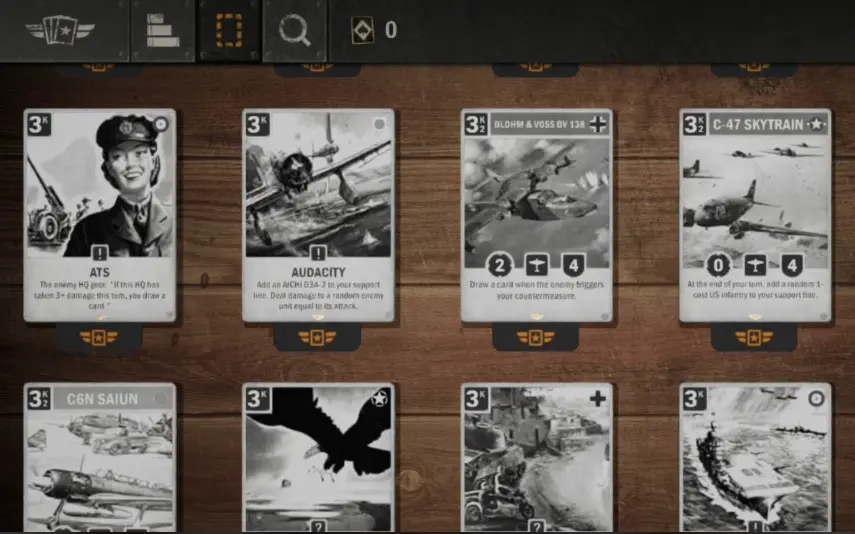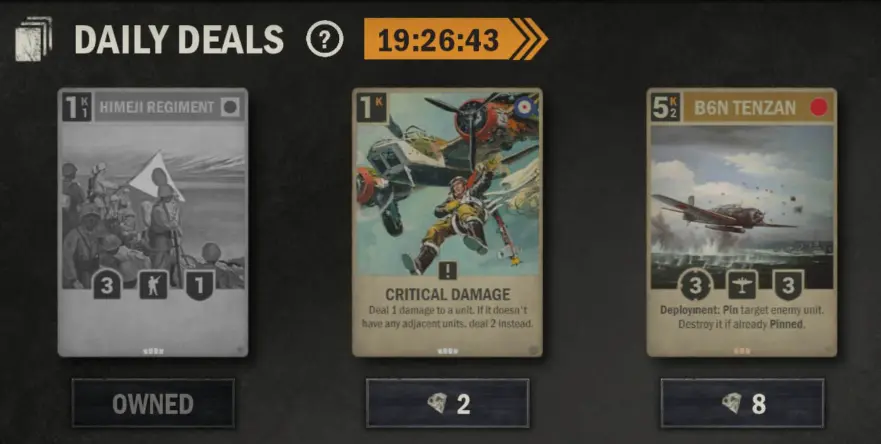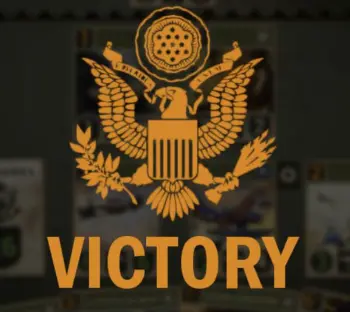For good or for bad, World War 2 was one of the defining events of the 20th century. While armed conflict is nothing new, World War 2 was unsurpassed in terms of scale and scientific advancement for both the betterment and detriment of humanity. Hopefully, we’ve all learned our lesson from then and turned our conquering spirits into better, more productive ways of competition. Like beating the crap out of each other in card games based on World War 2.
In KARDS, you serve as the commander of an army of your design. Crush your foes with superior military might via infantry battalions or cavalry detachments and protect your own headquarters before your opponent has a chance to break through. Historical lines become blurred as you create alliances between bitter foes and come up with cunning plans to defeat your foes to emerge victorious on the battlefield. KARDS has been around for a while on PC, but recently it’s become available for mobile on both the Google Play Store and the App Store.
KARDS has many similarities with other card games such as Stormbound, Shadowverse, or Hearthstone and if you’ve played those (or other games like them), you’ll have an easy time navigating the intricacies of this simple but deep card game. For completely new players though, or for those who just want a good starting point, this KARDS beginner’s guide is for you!
In this KARDS beginner’s guide, we’ll be going over:
- The basics of KARDS’ mechanics: Kredits, turn flow, victory conditions, and so on.
- The different types of cards and what you can do with them.
- The major factions and their specializations.
- Basic deckbuilding, as well as some tips and tricks.
- Where to get more coins and cards to build your ideal fighting force.
Boot Camp – The Rules
Whether it’s combat or card games, a thorough understanding of the basics is a must. By building a strong foundation today, we set the stage for future victories. Time to hit the books!
Quick Tips:
- Your goal is to destroy the opponent’s HQ. It doesn’t matter if they had more Kredits or a bigger field presence – once their HQ is gone, a player loses.
- The first player draws 4 cards from their deck, while the second player draws 5.
- You can replace any cards in your starting hand with randomly drawn ones in your deck. It’s a good idea to swap out expensive cards for cheaper ones so you have some early plays.
- Both players take turns placing cards on the field, playing orders, moving, or attacking.
- At the start of your turn, you gain 1 maximum Kredit and your Kredits are replenished to full. Players can have up to 12 Kredits by default.
- Actions require Kredits. Playing a card from your hand has a Kredit cost; so does ordering it to move and attack.
- When a card is on the field, the cost on its upper left reflects its operation cost.
- If you deck out, you’ll start taking fatigue damage when you have to draw a card. This directly damages your HQ.
Objective of the Game
The goal of KARDS is simple – destroy your opponent’s HQ by reducing its defense to 0 to win the game!
Of course, getting there is a different beast altogether. You’ll need to fight through your opponent’s army of infantry, tanks, and air support as well as powerful orders to get to your prize – all while preventing your opponent from doing the same to you!
Game Flow
Games of KARDS go as follows:
- One player is randomly selected to go first. The first player draws 4 cards for their starting hand, while the second player draws 5.
- At the start of the match, both players can mulligan: they can shuffle any unwanted cards back into the deck and draw new ones. It’s generally a good idea to shuffle more expensive cards back into your deck to make way for cheaper early-game cards.
- The turn player draws a card at the start of their turn, except for the first player. They gain 1 maximum Kredit, and their Kredits are replenished to max.
- The turn player can then play cards from their hand or move units on the board so long as they can pay for them.
- Once they’re satisfied, the turn player ends their turn, and their opponent gets to move.
Kredits
Kredits are to KARDS as mana is to Magic: The Gathering. Your fighting men need supplies to continue the battle, after all, and as commander, it’s your job to ration your Kredits. You can view the current and maximum Kredits of a player on the left side of their board.
At the start of each turn, the turn player gains 1 maximum Kredit (to a cap of 12) and fully replenishes their Kredits. This system means that you can’t play your strongest cards on turn 1, so be sure to include some cheap cards in your deck unless you want to surrender the board in the early game!
All cards cost Kredits to play. The Kredit cost of a card is written in its upper left. This is the cost to play that card from your hand, or deployment cost.
You may have noticed a second number beside the Kredit cost. That’s the card’s operational cost. Paying for a card is an ongoing thing, and if you decide to move or attack with a card, you must pay its operational cost.
While a card is on the field, the number on its upper left will change to reflect its operation cost.
Do note that for most cards, their operational costs are much lower than their deployment cost. Still, each unit is a heavy investment, so try your best not to lose too many of them.
Fatigue Damage
Last is the concept of fatigue damage. While most games of KARDS will end way before either player runs out of cards, it’s still possible to find yourself in this situation. If a player must draw a card while they have none in their deck, their HQ takes damage instead.
Boot Camp – Cards and Combat
Now that you (hopefully) understand the basics a bit better, it’s time to move to the meat of KARDS, namely, the various types of cards you can play and how they affect the field.
Quick Tips:
- There are three kinds of cards in the game – units, orders, and countermeasures.
- Units represent your fighting men. Each unit type can do different things.
- Units can either move or attack on their turn, not both, with the exception of tanks.
- When cards fight, they deal damage to each other based on their attack. Combat is simultaneous.
- There are three lines of battle in KARDS: both players’ support lines and the frontline.
- The frontline is occupied by whoever has a card in that line. Taking the frontline pressures your opponent as you’ll be able to attack their support line and HQ directly.
- Each line can only have 5 cards in it.
- Orders are one-time use “spell” cards from your hand.
- Countermeasures are hand traps that can be primed to activate when your opponent does something. Paying or deactivating a countermeasure is not reflected in your opponent’s POV.
- Cards can have keywords; mastering these keywords is important to understanding the game.
Card Types – Units
There are three main types of cards in KARDS: units, orders, and countermeasures.
Units represent your armies. These can range from infantry divisions to armored columns, and even powerful aircraft squadrons!
All units have an attack and defense value, located on the lower left and lower right of the card, respectively.
Unit Types
Each unit also belongs to a certain type which determines what it can do.
The different types of cards are:
- Infantry – the most basic unit type. Infantry can only move or attack once on their player’s turn.
- Tank – tanks are formidable frontline vehicles (yes, jeeps count as tanks) that can both move and attack on the same turn. Do note that you must pay Kredits for both of these actions!
- Artillery – artillery units can crush your foes from afar. They can attack units at any range and do not take counterattack damage. However, artillery units have pathetic amounts of health.
- Fighter – fighters are aircraft that can engage both ground and air targets. They can attack units at any range but take counterattack damage. They also protect their rows from bombers; your opponent cannot attack cards with a bomber in a row where you have a fighter.
- Bomber – bombers are heavy aircraft meant solely for engaging ground targets. Like artillery, they can attack at any range and do not take counterattack damage, and they also ignore Guarded status. However, bombers cannot attack any unit in a row with an enemy fighter. In addition, bombers do not deal counterattack damage.
Movement and Combat
The main thing that units are for is for smacking one another in combat. But the bulk of units – infantry and tanks – must first move to a nearby line before they can attack. To move a unit, tap it, then drag it to the next line. Note that you cannot move back, you cannot walk into the frontline if your opponent controls it, and you cannot move into your opponent’s support line – more on lines in the next section.
Once your card is near an enemy, it’s time to attack. To order a card to attack, drag it toward its attack target. This will initiate combat where, unit types notwithstanding, both units will deal damage to each other. Once a unit has been brought to 0 health, it is destroyed and removed from the field.
Units can only attack units in the line directly ahead of them, except for artillery, fighters, and bombers. Note that if a unit destroys an enemy unit, that does not make the winner move into the space left behind!
Finally, remember that you must pay the operational cost of a unit to make it move and/or attack and that only tanks can do both in the same turn.
Lines and Deployment
Because most units can only attack other units in the next line, field control is a very important aspect of KARDS. Hence, the problem of deployment. A game of KARDS can be broken down into three lines of battle. In the image below, my enemy’s support line is in red, the frontline is in blue, and my support line is in green. Each line can hold up to five cards, and each player can only deploy units to their support line.
The frontline is a special line – whoever has a unit in that line controls the frontline. If neither player has a unit in the frontline, it’s moved back to the middle of the board. While you can’t deploy units into the frontline, taking it is a large advantage as the player who controls the frontline can move their support line units into the frontline and can attack their opponent’s HQ and support line.
This means that your vulnerable artillery and bombers can easily be shot down by enemy infantry and tanks if your opponent controls the frontline. Do your best to either maintain your control of the frontline or have a backup force ready to repel the invaders!
Card Types – Orders
Orders are like spell cards in other card games.
Orders offer a powerful one-time effect. Whether it’s gathering resources, dealing damage, or outright destroying an enemy unit, strategic use of orders can be used to get rid of immediate threats and put more pressure on your opponent.
Card Types – Countermeasures
Countermeasure cards are KARDS’ equivalent of Yu-Gi-Oh’s Trap cards. They do nothing by themselves but can be primed by paying their cost. Once their cost is paid, they will automatically trigger based on the criteria written on the card text. A well-timed countermeasure can really screw up your opponent’s plans!
Do note that countermeasures have unique UI elements – your opponent cannot see if you’ve paid the cost for a countermeasure. It’d be too easy otherwise. You can also deactivate a countermeasure by dragging it to the field; this will refund the Kredit cost and switch the card back into its unprimed state. Once again, your opponent will not see this action being performed.
Keywords
Keywords are terms that come part and parcel with any card game. These serve to abbreviate paragraphs of text into a single, easily understood term. As a new player, understanding and mastering these keywords is a must if you’re to have any hope of building a cohesive deck and countering your opponent’s plays.
The current keywords in KARDS are:
- Add – get a card from outside of the current game. Cards that are added to your hand are not drawn. Cards that are added to the field are placed on the rightmost side of the support line and do not trigger their Deployment effects.
- Alpine – when Deployed or Added, Alpine units get +1/+1 for every other Alpine unit you have on the field.
- Ambush – units with Ambush counterattack first. If this destroys the attacker, the Ambusher takes no damage. Ambush is lost after the first combat of a turn. Units with Ambush regain the ability at the start of their player’s turn.
- Blitz – haste. Cards with Blitz can move or attack the turn they enter play.
- Combat – Combat happens when two units fight each other regardless of whether they did damage to each other or not. Attacking an HQ is not counted as Combat.
- Deployment – Deployment effects activate if a unit is played from your hand.
- Destroy – Destroyed cards are removed from the field.
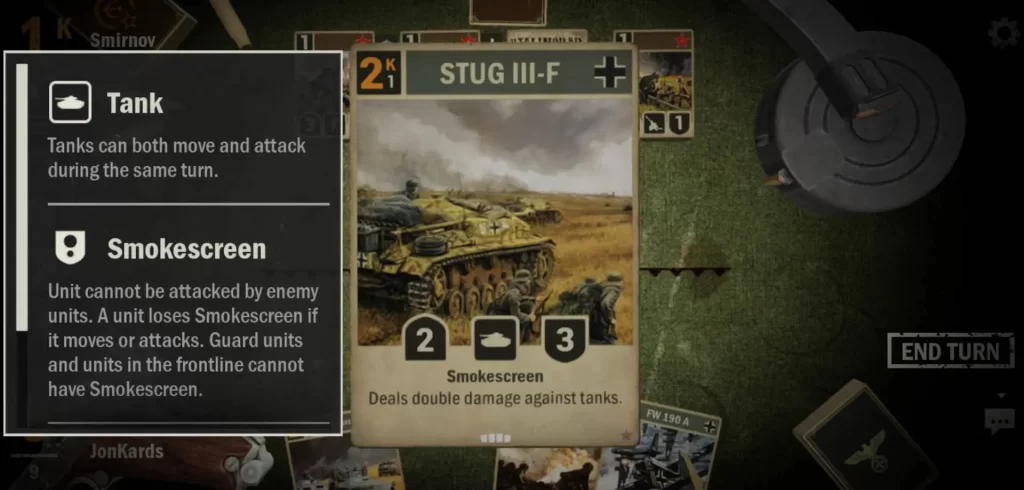
- Destruction – A unit’s Destruction effects trigger when that unit is Destroyed.
- Exile – units with Exile can be placed in a deck even if their nation is not part of that deck. During a match, an Exile’s nation is counted as your main nation.
- Fury – units with Fury can attack twice on their player’s turn. The second attack still requires you to pay the operational cost!
- Guard – taunt. Units and HQs adjacent to a unit with Guard cannot be attacked until that card is destroyed. Guard Cards cannot be Guarded themselves, nor can they gain Smokescreen.
- Heavy Armor (X) – takes X less damage from Combat. Does not affect damage from effects.
- Immune – Immune units are invulnerable to damage. They can still be destroyed via Destroy effects or by hitting them with defense reduction.
- Intel (X) – your opponent reveals X random, unrevealed cards from their hand. These can still be played even if all cards have been revealed.
- Mobilize – units with Mobilize gain +1/+1 at the start of their owner’s turn. Mobilize is canceled when that unit takes damage.
- Passive – passive effects can range from persistent effects on allied cards or a simple damage boost to certain types of cards. Cards with passive effects are indicated with a plus icon beside them.
- Pin – pinned units cannot move nor attack. A Pinned unit is freed at the end of their player’s next turn.
- Pincer – target ally also gains the effect of the Pincer card. The effect is lost if either one of the cards is removed from the field.
- Repair – restore a unit’s defense to its maximum value.
- Retreat – a Retreating unit is pushed back one battle line. If it’s in the frontline it will be sent to the support lines; if it’s in the support lines it will be returned to the hand.
- Smokescreen – a unit with Smokescreen cannot be attacked by units.
- Veteran – this unit evolves into a more powerful form when certain conditions are met.
Deckbuilding 101
Now that you have a more solid understanding of the game’s basics, it’s time to get to the nitty-gritty of building your own deck. Deckbuilding is an essential part of any card game and it’s more science than art. You won’t always be able to get the results you want, but by carefully tweaking your deck, you can ensure that you’ll have a better fighting chance.
Quick Tips:
- Do the starter campaigns for each faction. This not only nets you free cards but also teaches you how each major power likes to play.
- You can ally with any nation regardless of how history itself played out. Use your allied nation to either double down on your main nation’s strengths or patch up its weaknesses.
- Be wary of adding too many low-cost or high-cost cards as they can be your downfall. Strive to strike a good balance between the two and ensure that you always have a play at any point in the game.
- You can make your deck more consistent by adding more copies of a card, by using effects that draw specific cards from your deck, or by using cards that let you draw more cards. The more cards you have in your hand, the more options you’ll have to counter your opponent’s plays!
- Look for orders that help you push your playstyle or cover weaknesses.
- Theorycrafting is not enough. You have to take your deck to the battlefield to get a more realistic assessment of its strengths and weaknesses.
Learn the Different Factions
Each of KARDS’ five factions represents a major world power in World War 2, and some of their specializations have been passed down into their modern card forms. And just as with every card game, each faction in KARDS takes a different general approach to the game.
More importantly, you should play each of the five factions’ starter campaigns. This way, you get a feel for the playstyle of each major power and find one that you like. And you get free cards, too!
The five playable factions are:
- The U.S. is the master of deployment. Sure, they may not have the raw firepower of the Soviets, the field presence of the Germans, nor the defensive prowess of the British – but when awoken, this sleeping giant doesn’t hold back. With many ramp cards (increase Kredit slots allowing you to play more expensive cards earlier and going beyond the cap of 12) and a powerful air force, the U.S. shines in the mid to late game.
- Britain holds the line like no other. Their cards may lack initial offensive power, but many of them come with the Guard ability and can ramp up thanks to Britain’s defense-based orders. Couple this with their high HP and naval support and your opponent will find it very difficult to pierce a battle line held by the British.
- Germany believes that the best defense is a good offense. To that end, they have versatile cards that excel at taking and retaking the frontlines and maintaining their field presence. When the time comes to strike, Germany relies on their powerful Blitz tanks as well as the Smokescreen ability to keep their support units safe.
- The Soviet Union is massive, and thus their cards are…a bit all over the place. This isn’t a bad thing though as you can assemble a lot of decks out of Soviet cards – direct damage, good early game cards, and snowballing potential are all within the capabilities of a good Soviet deck.
- Japan’s cards are tenacious. Not only are they aggressive and hard-hitting, but their floating Destruction effects ensure that death is not the end for them. Playing as Japan demands a commitment to a fast, dangerous, yet high-reward playstyle – lest your opponent overpowers you in the late game!
Allies
A nation alone is strong, but two nations together are almost unbreakable. By using the ally system, you can hybridize your deck, both covering up your weak spots and adding curveballs that your opponent hopefully won’t see coming!
As KARDS is very similar to a hypothetical “who would win” scenario, historical alliances are thrown out the window and you can ally with any other nation.
Up to 12 of the 40 cards in your deck can be from your ally.
Minor Nations
Apart from the five main factions, there are also three minor nations that can be called on as allies. Note that these minor nations cannot be used as your main force!
The minor nations in KARDS are:
- Italy is best suited to assist a deck that pushes for early advantage – however, they suffer much more greatly than any other type of card when taking losses. Many Italian cards come with the Alpine ability, rewarding their player for putting multiple Alpine cards on the field as they all reinforce each other. Japan, the Soviet Union, and Germany are good partners for creating an Alpine deck.
- France may have lost the war early, but her people bravely soldiered on as resistance fighters. And the more time la resistance has to gather steam, the better. French cards often come with the Mobilize ability, increasing their attack and defense by one for each turn they remain undamaged. France also excels at disruption thanks to their orders and cards that mess up your opponent’s hand and reduce your opponent’s Kredits.
- Poland excels at reading and reacting to your opponent’s plays via their powerful Intel cards, sponsored by the Polish Underground State. In their case, knowledge is literally power for the LEGIONS card that gains +1/+1 each time you play an Intel card! Finally, Poland has a notable number of Exile cards that can be included in any deck whether or not said deck has their nation in it.
Low Cost versus High Cost
One of the biggest pitfalls of deck construction in any card game is the inclusion of either too many strong high-cost cards or cheap low-cost cards that lack a way to deal with their weaknesses.
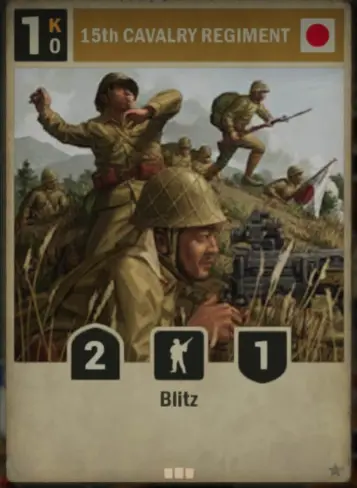
While players of other card games are probably familiar with terms like midrange, combo, token, and aggro and likely won’t need as much advice, new players should be especially wary of falling into this trap until they’re comfortable with their faction as well as the game in general. You’ll need to strike a good balance between early aggression, mid-game field presence, and late game might to make a good deck and ensure you have a good play at any point in the game.
Consistency and Speed
Forty cards is a lot of cards to go through. This means that you’ll need to take measures to speed up adding key combo pieces to your hand, or just want to replenish your depleted resources. There are three main ways to do this:
- Have more copies of a card to your deck. You can have 4 copies of a standard card, 3 copies of a limited card, 2 copies of a special card, and only 1 copy of an elite card.
- Use cards that search out specific cards in your deck.
- Use cards that let you draw more cards.
Remember: the faster you can dig through your deck and draw cards, the more options you’ll have!
Orders Again
Don’t underestimate the importance of orders in your deck. While they may not offer you any field presence, a good order at the right time can turn the tides of combat!
Orders can help you with a lot of things: if you’re struggling with high defense units, try adding some direct damage or destruction effects. If you like playing with lots of cheap units, find orders that buff units. If your opponent’s support line is loaded with artillery that you can’t reach, there’s probably an order out there that ravages your opponent’s backline.
Experience is the Best Teacher
Theorycrafting your deck is one thing, but to smooth the edges, you’ll need to bring it into actual combat. Remember: no loss is a failure if you learned something from it.
Finding More Cards
The starter decks are well and good, but to really sink your teeth into KARDS and deckbuilding, you’ll need to find more cards. Here’s how to do so.
Quick Tips:
- It’s generally better to buy officer packs than common ones – the starter campaigns will have given you a lot of commons and officer packs have a better chance for rare cards.
- Wildcards can be used to craft cards. You need to have a wildcard of matching rarity before you can make a card.
- Wildcards can be gotten through packs or leveling up a nation. You also gain wildcard progress if you get duplicates of cards that you’re already at the maximum copies of. This fills up a crate bar, which gives random wildcards when full.
- Daily deals at the shop give one free card. You can buy them with diamonds. Be sure to check back on Tuesdays and Fridays as the shop will have a special card then, as well as an elite card on Sunday.
- Be sure to complete your missions and level up your nations to get big amounts of coins and other resources. You also get smaller amounts by playing and winning against human opponents.
Booster Packs
The fastest way to build your card collection is via booster packs. You can buy both normal and officer packs for coins or diamonds.
It’s generally a better idea to save your coins for officer packs. Normal packs may be much cheaper but have a much lower draw rate for limited, special, and elite cards. If you did the starter campaigns, you’ll also have a good amount of commons for every faction, and officer packs are more likely to give your deck that oomph it needs.
Wildcards and Crafting
Yes, KARDS has a crafting system, though it’s a lot more rigid compared to other mobile card games.
Wildcards can be used to craft cards of specific rarity. There are also national wildcards that have the added restriction of only being able to make a card for their respective nation.
You can get wildcards through one of three means:
- Randomly, via booster packs.
- As part of nation progression.
- The wildcard crate: if you get a card that you already have the maximum playable copies of (again, 4 standard, 3 limited, 2 special, 1 elite), the duplicate(s) will be added to the wildcard crate. Fill up the crate’s meter all the way and you get a random assortment of wildcards.
To use your wildcards, you’ll need to access your card collection. Tap on the dotted line frame on the upper part of the screen. You can additionally use filters on the right of the screen – there are filters for rarity, nation, card type, and card set.
Because of how rare wildcards are, I’d advise getting familiar with the game first before committing to using your wildcards.
Daily Deals
Be sure to visit the daily deals section in the shop as you can get a free card there daily!
The other cards will cost a small sum of diamonds, which you can buy if you really need them. I’d advise holding off though as the daily deal shop has a special card on Tuesday and Friday, as well as an elite card on Sunday.
Farming Coins
As coins are core to getting more cards in KARDS, here’s where you can get more of them:
- Daily missions. These give out a large sum of coins. You can replace a daily mission if you don’t want to or can’t complete it. Note that fighting the AI in training mode counts toward mission completion!
- Nation progress. The more you play with one nation, the more exp it gets. Each level gives out nice rewards – coins, yes, but also diamonds and cards.
- Beating human players also nets you a small number of coins.
The Battlefield Awaits
KARDS is a mechanically simple but surprisingly deep and engaging game. While I’ve done my level best to introduce the game, its mechanics, and its intricacies to new players, nothing beats good old experience. Don’t be afraid to venture out there and get beaten up – the lessons you learn from veterans will be invaluable to your growth as a beginner.
That concludes my beginner’s guide to KARDS, and I hope I was able to make your learning curve a little smoother and a little less rocky. If you have any suggestions, tips, or tricks of your that you’d like to share, make yourself heard in the comment area!

